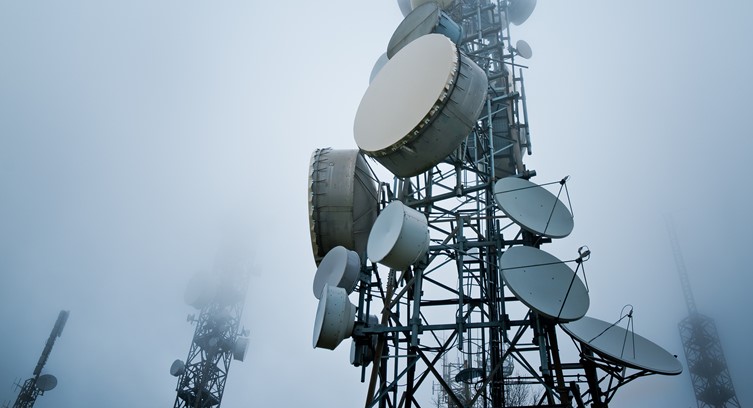While the peaceful coexistence of Wi-Fi and 5G will rule the day, private 5G will give Wi-Fi a run for its money in enabling essential digital transformation initiatives driven by Industry 4.0 technologies.
As the race toward fast and universal 5G technology heats up, companies are constantly questioning the competitive nature of "private wireless" versus Wi-Fi as 5G devices, infrastructure and services proliferate.
Private wireless has become the industry moniker for the use of 4G/5G cellular products and services exclusive to a business.
While the short answer to this nagging question is a resounding no, the longer answer is not as straightforward and littered with technical nuance.
With higher modulation rates (among other things), 5G can deliver greater capacity and Wi-Fi-like performance over much longer ranges. Just this one fact begs the “this versus that” comparison.
Why the debate
Exacerbating this debate have been recent advances in the IEEE 802.11 specification, such as Wi-Fi 6, that promise lower network latency, higher speeds, and increased capacities. These enhancements are designed to make Wi-Fi behave more like cellular.
Meanwhile, improvements in cellular technology coupled with the allocation of newly released coordinated spectrum have brought the cost and complexities of cellular deployments to the level of enterprise Wi-Fi.
Consequently, Private 4G/5G wireless technology, has become as accessible, affordable, and consumable by the enterprise as Wi-Fi, without prohibitive spectrum licensing fees.
Until recently, businesses have effectively been unable to own and operate their own private wireless networks. Now, as telecom regulatory bodies around the word seek to democratize cellular spectrum, companies can do just that. And it couldn’t come at a better time as enterprise dependance on network-connected everything explodes.
Organizations are increasingly reliant on wireless mobility for a myriad of applications that are directly tied to business outcomes. From automated robotics on the manufacturing floor, facial recognition in large public venues to real-time asset management systems in the warehouse, the inherent deficiencies of Wi-Fi in supporting these use cases are driving enterprises to look elsewhere for reliable wireless connectivity.
Wi-Fi pros and cons
Wi-Fi was originally conceived as a consumer-technology and has become the defining wireless access method within companies for giving users easy access to business applications and the Internet --and it’s never looked back.
Given its use of unlicensed (free) spectrum, low deployment cost and a ubiquitous ecosystem of user devices, businesses can easily offer Wi-Fi hotspots throughout their businesses for staff and visitors requiring basic connectivity. This won’t change. Wi-Fi will r remain ideally suited for confined, indoor environments such as offices, retail stores and airports.
However, as the enterprise looks to broaden the use of wireless technologies to bring greater mobility to vital business operations and applications, they have discovered that Wi-Fi isn’t always the best tool for the task.
Even with fresh advancement to the 802.11 specification that enable it to look and feel more like cellular technology, Wi-Fi uses a long-standing contentious media access mechanism (CSMA/CA) that requires devices to arbitrate or fight for access to the network – a source of constant frustration for IT staff.
And given its power constraints, security concerns and frequency behavior, Wi-Fi signals often struggle to reliably reach where they are a needed most.
Interference, obstructions, high client densities and media contention can quicky render a Wi-Fi service useless. Moreover, security concerns have only served to bolster questions about using Wi-Fi within businesses where data privacy is paramount. In a steel plant, manufacturing plant, or hospital, if devices can’t securely connect to the Wi-Fi network, business stops.
Private 5G to the rescue?
While private wireless overcomes many these issues, widespread access to the cellular technology, until recently, has been limited, requiring companies to enter costly and complex contracts with big cellular carriers. But that has all changed.
The recent introduction of Citizen’s Broadband Radio Service (CBRS) by the FCC and other telecom regulatory bodies around the world has now made cellular technology much more accessible to companies who want to own and operate their own private wireless networks to complement to their existing Wi-Fi infrastructure.
Clearly the future looks bright for private 5G within the enterprise. But just because a device supports 5G doesn’t mean it can operate within the dedicated private wireless bands the enterprise needs. For any enterprise with a specific need for 5G, this can limit its usefulness as companies must carefully pick and choose the right client devices required. While the ecosystem for CBRS supported devices is rapidly expanding, this problem doesn’t exist for Wi-Fi.
Still, the cost, performance, and availability of 5G technology has historically prohibited many organizations from a wholesale replacement of Wi-Fi. Now, the cost of new private wireless systems leveraging LTE and 5G cellular technology rivel enterprise Wi-Fi while systems while delivering much greater range, reliability, and mobility.
Unlike Wi-Fi, cellular technology is centrally controlled with access and operation meticulously scheduled by the network itself. This means user devices are explicitly instructed when and how long they can access the network on a specific wireless channel. During that time, clients have dedicated access to the medium. This deterministic approach provides more predicable connectivity by effectively eliminating devices fighting for network transmit/receive access.
In many cases 5G technology solves a myriad of long-standing problems companies have faced with Wi-Fi. Because 5G is cellular technology, it distinguishes itself from Wi-Fi in several areas including reduced interference, security granularity, lower network latencies, uninterrupted mobility, and reliable connectivity.
Due to these strengths, private 5G has become more effective for mobile systems such as automated guided vehicles or indoor/outdoor inventory applications such real time asset management in logistics and warehousing environments.
Compared to Wi-Fi, 5G radios transmit wireless signals at much higher power levels with less interference. And using prescriptive handoff mechanisms, private 5G ensure pervasive service continuity as devices move round so users and applications remain always connected.
What wins?
5G will certainly give Wi-Fi a run for its money. But this by no means signals that 5G will replace Wi-Fi anytime soon.
Private 5G is now as the ideal complement to Wi-Fi and soon to be the wireless technology of choice for the vital enterprise use cases where reliable connectivity is no longer negotiable. And that list of uses cases is growing fast.




















